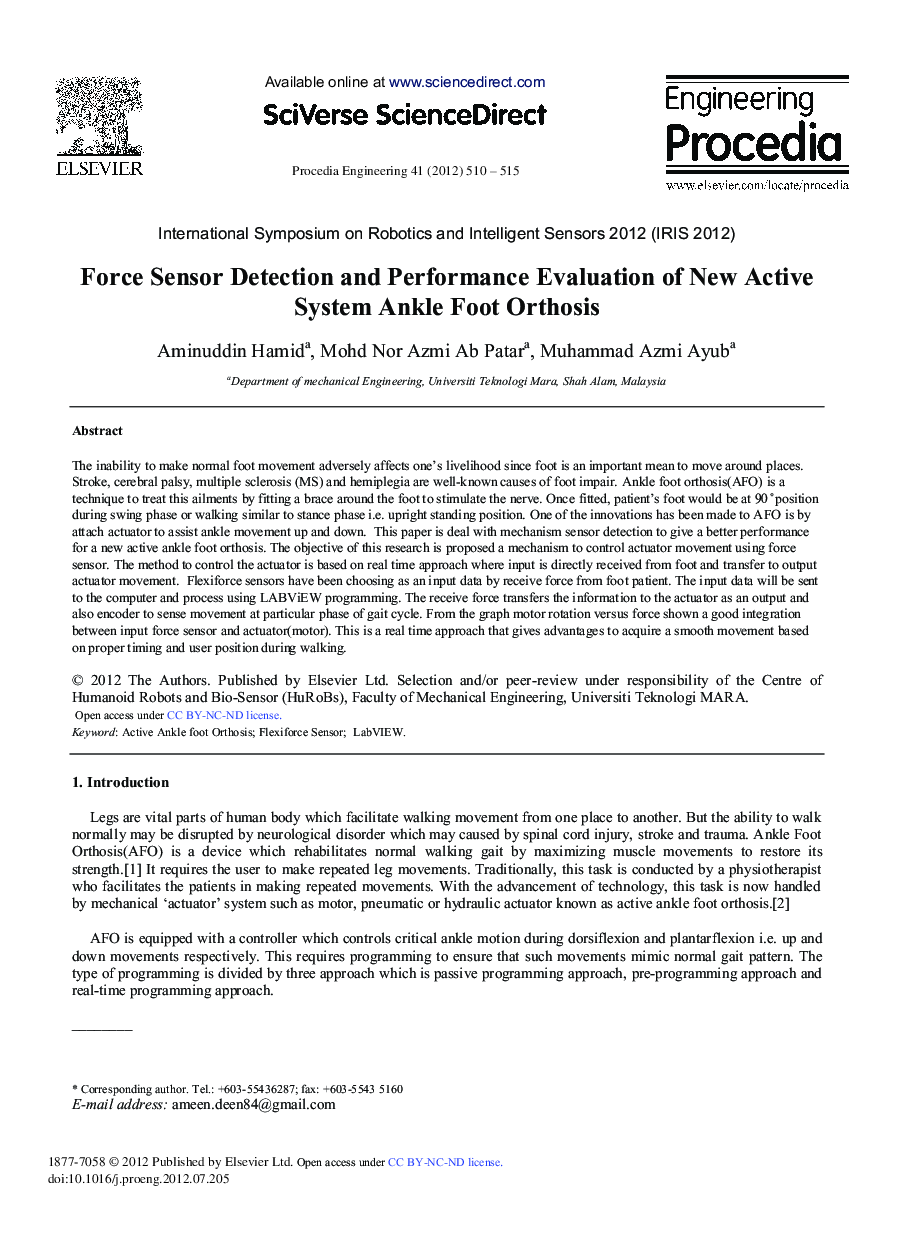| کد مقاله | کد نشریه | سال انتشار | مقاله انگلیسی | نسخه تمام متن |
|---|---|---|---|---|
| 861139 | 1470785 | 2012 | 6 صفحه PDF | دانلود رایگان |

The inability to make normal foot movement adversely affects one's livelihood since foot is an important mean to move around places. Stroke, cerebral palsy, multiple sclerosis (MS) and hemiplegia are well-known causes of foot impair. Ankle foot orthosis(AFO) is a technique to treat this ailments by fitting a brace around the foot to stimulate the nerve. Once fitted, patient's foot would be at 90° position during swing phase or walking similar to stance phase i.e. upright standing position. One of the innovations has been made to AFO is by attach actuator to assist ankle movement up and down. This paper is deal with mechanism sensor detection to give a better performance for a new active ankle foot orthosis. The objective of this research is proposed a mechanism to control actuator movement using force sensor. The method to control the actuator is based on real time approach where input is directly received from foot and transfer to output actuator movement. Flexiforce sensors have been choosing as an input data by receive force from foot patient. The input data will be sent to the computer and process using LABViEW programming. The receive force transfers the information to the actuator as an output and also encoder to sense movement at particular phase of gait cycle. From the graph motor rotation versus force shown a good integration between input force sensor and actuator(motor). This is a real time approach that gives advantages to acquire a smooth movement based on proper timing and user position during walking.
Journal: Procedia Engineering - Volume 41, 2012, Pages 510-515